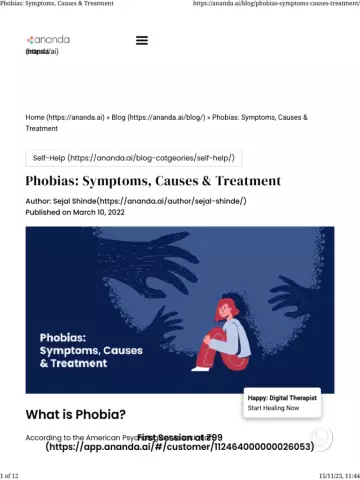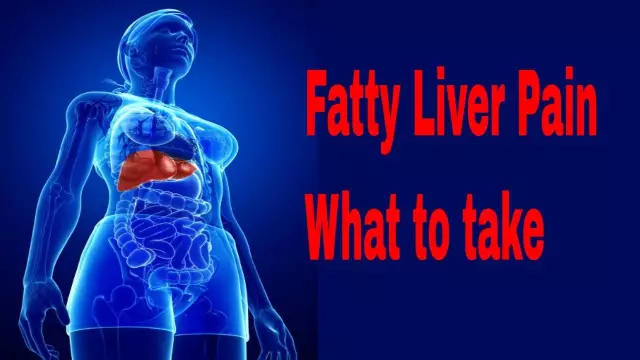- Author Rachel Wainwright [email protected].
- Public 2023-12-15 07:39.
- Last modified 2025-11-02 20:14.
Hypersomnia
The content of the article:
- Causes and risk factors
- Forms of the disease
- Symptoms
- Diagnostics
- Treatment
- Possible complications and consequences
- Forecast
Hypersomnia is a state of unusual sleepiness during the day (during wakefulness), which is not explained by insufficient sleep time, or inadequately long (difficult) awakening, excessive duration of night sleep.
In healthy people, the duration of night sleep is individual and is not a constant characteristic; on average, it is 5-12 hours a day, depending on environmental factors. As a result of the research, it was found that with a normal work schedule (not with shift activities, not with shift work, etc.), the average duration of sleep in somatically and mentally healthy people is approximately 7.5 hours on working days and 8.5 hours on weekends.
Hypersomnia can be either permanent or episodic.
Synonym: pathological drowsiness.

Hypersomnia - a state of unusual sleepiness during the day
Causes and risk factors
Persistent pathological drowsiness usually develops as a result of organic lesions of the brain in various diseases and dysfunctions of the central nervous system; behind neurological disorders, diseases of the mental sphere are sometimes found.
Hypersomnia can also occur in practically healthy people as a result of acute stressful effects or chronic psychoemotional stress. Often, patients can trace a causal relationship with any psycho-traumatic effect that preceded the development of hypersomnia. In some cases, the cause of pathological drowsiness is an increased need for sleep that occurs during prolonged and excessive exertion.
The most common causes of hypersomnia are:
- genetically determined or acquired imbalance in regulatory neurotransmitters;
- viral and bacterial diseases of the tissues of the brain and meninges (encephalitis, meningitis);
- pathology of the hypothalamus and related structures;
- intense acute or chronic stressful effects (military action, threat to life, abrupt change in life situation, etc.);
- defect in the central mechanisms of regulation of the "sleep - wakefulness" mode;
- volumetric neoplasms of the brain;
- side effect of certain medications;
- schizophrenia-like disorders, neurasthenia, depression spectrum disorders;
- acute disorders of cerebral circulation;
- traumatic brain injury;
- chronic diseases (diabetes mellitus, hypothyroidism, etc.).
Forms of the disease
Hypersomnia happens:
- permanent (permanent);
- paroxysmal (episodic).
Varieties of paroxysmal hypersomnia:
- narcolepsy;
- pickwick syndrome;
- hysterical hypersomnia;
- Kleine-Levin syndrome;
- lethargic hypersomnia;
- syndrome of hypersomnia and drowsiness.
Symptoms
Appearance of a permanent form of hypersomnia:
- drowsiness or episodes of sleep during the daytime (with normal duration of night sleep) and / or difficult transition to a state of full wakefulness after waking up;
- stable daily nature of the pathological condition for at least 1 month, deterioration of social interactions and work activity;
- no additional symptoms of narcolepsy or sleep apnea.
The symptoms of paroxysmal hypersomnia depend on its form.
Narcolepsy is characterized by:
- daytime sleepiness;
- cataplectic attacks - sudden short-term (within a few seconds) loss of muscle tone;
- disturbance of night sleep - restless, superficial, often with frightening dreams, frequent awakenings with prolonged episodes of insomnia;
- hypnagogic hallucinations - vivid visual and auditory images that occur between wakefulness and sleep, when falling asleep;
- cataplexy of falling asleep (awakening) - immobility lasting from several seconds to several minutes at the moment of falling asleep or waking up, respectively.
Narcolepsy can be polysymptomatic (with cataplexy) or monosymptomatic (without episodes of cataplexy). In the case of the polysymptomatic form, drowsiness is paroxysmal, often develops in the first half of the day, patients note vivid dreams reflecting past events.

With hypersomnia, cataplexy of falling asleep may occur
The monosymptomatic form is characterized by the appearance of drowsiness in the evening or afternoon. At the onset of the disease, patients try to fight drowsiness in vain, aggravating the condition. In this case, hypersomnia is often combined with the safety of motor acts: a patient who suddenly fell asleep continues to stand, walk, talk, perform current activities, if the attack develops less rapidly, the patients manage to take a comfortable position. An episode of drowsiness lasts several minutes, the frequency of attacks is from one to dozen per day, usually three to four. After an episode of drowsiness, patients feel cheerful, return to previous activities.
Pickwick syndrome is a combination of obesity, breathing disorders (rapid, shallow breathing) and daytime bouts of sleepiness. With this pathology, night sleep is also disturbed, it does not bring vigor; patients complain of weakness, morning headache.
The manifestation of the Kleine-Levin syndrome is a combination of periodic attacks of hypersomnia and bulimia. It occurs more often in young men, boys. The episode of sleep is preceded by mental and motor excitement, insomnia. A characteristic symptom of the syndrome is the consumption of food in an inadequate, excessive amount during an attack or the day before, while patients are not characterized by a purposeful search for food, they eat only what they see. The duration of an attack in Kleine-Levin syndrome can be up to several weeks. With spontaneous awakening, confusion and confusion arise, with forced awakening, aggression is possible.

Hypersomnia associated with Kleine-Lewin syndrome, combined with bulimia
The main symptom of hysterical sleepiness is the previous traumatic situation. Outwardly, the patient is in a state of deep sleep, but it is almost impossible to wake him up. There is no urination, stool retention is observed, while the reaction of the pupils to light remains, the patient's attempt to open the patient's eyes passively meets resistance. Skin sensitivity is significantly reduced, muscle tone is increased, blood pressure is normal, tachycardia, increased sweating of the palms and feet are noted. The EEG shows a characteristic picture of wakefulness.
Lethargic hypersomnia is manifested by the limitation of the physical manifestations of life, immobility, a significant slowdown in metabolism, a weakening or lack of response to stimuli, even intense ones. In severe cases, a picture of imaginary death is formed: the skin and visible mucous membranes are pale, cold, there is no reaction of the pupils to light, breathing is determined with difficulty, there is no pulse in the peripheral arteries. Patients do not drink, do not eat, the excretion of urine and feces stops. Both the development of an episode of lethargy and its resolution are sudden.
The peculiarities of the syndrome of hypersomnia and drowsy intoxication are the lower frequency and longer duration of sleep compared to narcolepsy. In this case, there are no signs of a narcoleptic complex, a triad of symptoms is characteristic - daytime sleepiness, lengthening of night sleep and confusion after waking up, lasting from 15 minutes to 2 hours.
Diagnostics
Diagnosis of hypersomnia is based on characteristic symptoms, the results of genetic counseling and a comprehensive analysis of the results of such studies:
- assessment of the patient's condition using the Stanford Sleepiness Scale and Epworth Sleepiness Scale, which objectively reflect the degree and characteristics of sleep disorders;
- multiple sleep latency test (MLST), assessing the biological need for sleep;
- polysomnographic study, including electroencephalographic, electrooculographic and electromyographic studies with subsequent assessment of the results in the aggregate;
- assessment of somatic support (comorbidities that reduce the quality of life and affect the sleep process).
A psychologist (psychotherapist) consultation is also held.

Polysomnographic examination helps to determine the cause of hypersomnia
Treatment
Medication therapy:
- stimulants;
- nootropics;
- antidepressants.
Non-drug interventions:
- psychotherapeutic effects (relaxation techniques, methods of limiting stimulation and limiting sleep);
- physiotherapy procedures;
- normalization of sleep hygiene.

Psychotherapy and relaxation techniques are helpful for hypersomnia.
Possible complications and consequences
The negative consequences of hypersomnia can be:
- deterioration of social interactions, decreased performance, inability to maintain an adequate regime of work and rest;
- maladjustment disorders (psychological and somatic);
- exacerbation and aggravation of chronic diseases;
- development of psychosomatic diseases.
Forecast
The prognosis is favorable, since hypersomnia does not lead to the development of life-threatening or deteriorating quality of life somatic complications. Favorable prognosis decreases in the context of social activity and work with frequent bouts of drowsiness that occur during the day and interfere with the patient's normal activities.
YouTube video related to the article:

Olesya Smolnyakova Therapy, clinical pharmacology and pharmacotherapy About the author
Education: higher, 2004 (GOU VPO "Kursk State Medical University"), specialty "General Medicine", qualification "Doctor". 2008-2012 - Postgraduate student of the Department of Clinical Pharmacology, KSMU, Candidate of Medical Sciences (2013, specialty "Pharmacology, Clinical Pharmacology"). 2014-2015 - professional retraining, specialty "Management in education", FSBEI HPE "KSU".
The information is generalized and provided for informational purposes only. At the first sign of illness, see your doctor. Self-medication is hazardous to health!






